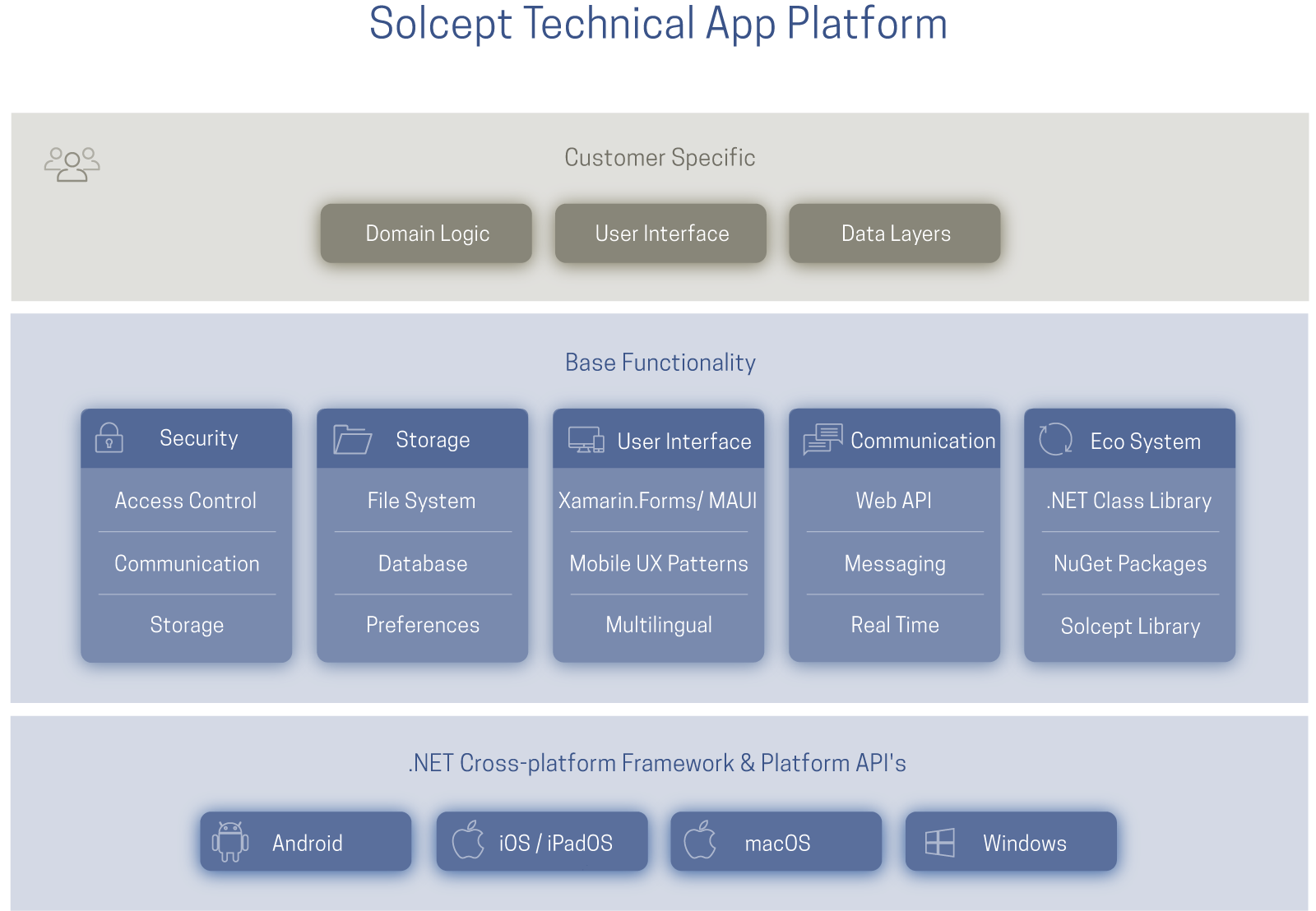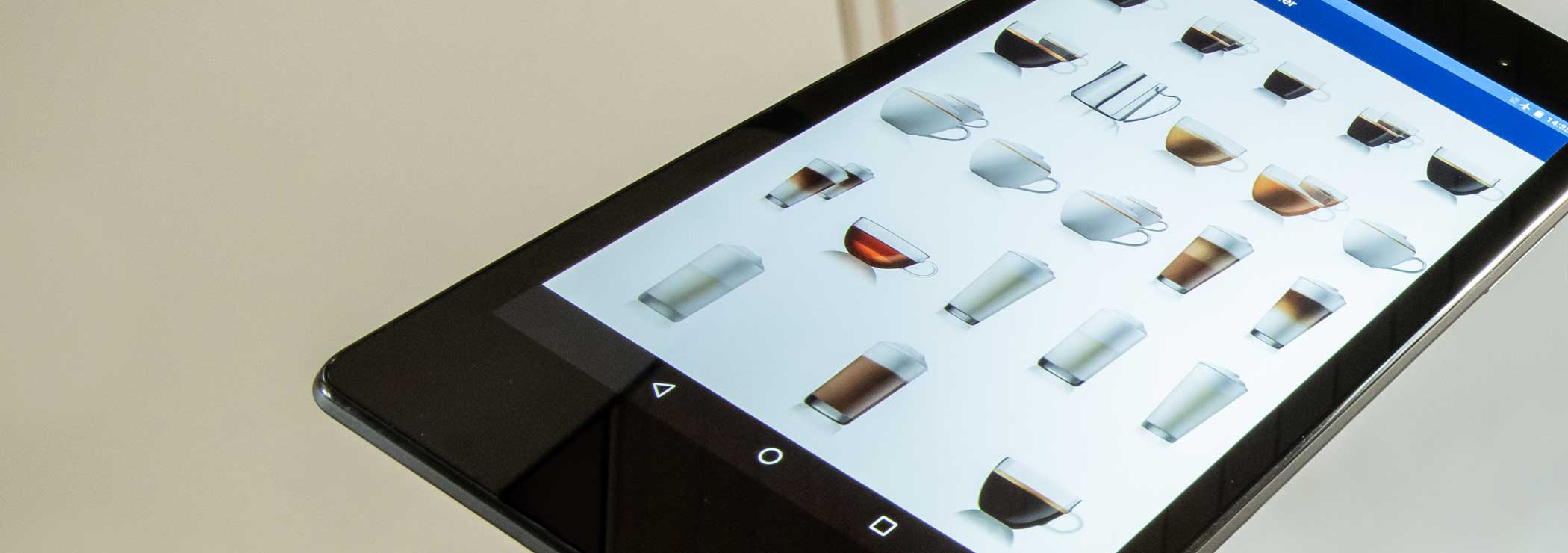
Functionality of the Standard Design
The platform offers these options (see also the drawing above: blue part):
- Communication with the operator
- standard operating interface of the smartphone/ tablet/ laptop
- touch
- Communication with your (IoT) device
- USB
- WLAN/ Bluetooth
- Communication with the internet/ cloud
- Wireless LAN
- Application framework
- infrastructure framework for modular and maintainable applications
The non-functional requirements that the design fulfills are also important. These are often the larger limitation than the functional aspects:
- Data security
- secure software update via the Internet
- data security through encryption
- encrypted end-to-end communication
- Industrial quality
- developed according to Solcept processes (CMMI for Development (Maturity Level 3), ISO 9001)
Your Application
The specific application (developed in C# .NET) can include, but is not limited to:
- User interface
- with "look and feel" of the respective device
- Evaluation and signal processing of sensors
- camera
- microphone
- GNSS
- position/acceleration sensor
- Maintenance of devices
- parametrization
- software updates
- debugging/ logging
- Any other functio
Technology Base
This Standard System Design is based on the following technologies:
- Operating system
- Mobile: iOS, Android
- PC: Windows, macOS
- Web API
- HTTPS (Web-API)
- Solution Stack
- C#, .NET, .NET MAUI, Xamarin Forms
- Security
- TLS, DTLS, X.509
- AES, RSA, ECC
- SHA
- Interfaces & protocols
- Wireless
- WLAN (Wireless Local Area Network)/ Wi-Fi
- Bluetooth Classic, Bluetooth Low Energy (BLE)
- Near Field Communication (NFC)
- Wired (only for PC/ Laptop!)
- Ethernet
- IPv4, IPv6, TCP
- USB, UART
- Ethernet
- "IoT/ IIoT"
- MQTT (Message Queuing Telemetry Transport)
- AMQP (Advanced Message Queuing Protocol)
- Push-Nachrichten
- Interfaces/ Sensors
- USB, UART
- camera, microphone
- GNSS, position/ acceleration sensor
- Wireless
